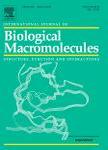版权所有:内蒙古大学图书馆 技术提供:维普资讯• 智图
内蒙古自治区呼和浩特市赛罕区大学西街235号 邮编: 010021

作者机构:Jiangnan Univ Sch Biotechnol Key Lab Ind Biotechnol MOE Wuxi 214122 Peoples R China Wuhan Inst Technol Minist Educ Sch Chem Engn & Pharm Key Lab Green Chem Proc Wuhan 430205 Peoples R China Kunming Univ Sci & Technol Fac Chem Engn Kunming 650000 Peoples R China
出 版 物:《INTERNATIONAL JOURNAL OF BIOLOGICAL MACROMOLECULES》 (Int. J. Biol. Macromol.)
年 卷 期:2025年第316卷第Pt 1期
页 面:144709页
核心收录:
学科分类:0710[理学-生物学] 081704[工学-应用化学] 07[理学] 08[工学] 0817[工学-化学工程与技术] 070303[理学-有机化学] 0703[理学-化学]
基 金:National Natural Science Foundation of China [22478154, 22361142705] Joint Fund for the Regional Innovation and Development of the National Natural Science Foundation of China [U23A20135] National First-class Discipline Program of Light Industry Technology and Engineering [QGJC20230203] Key Laboratory of Industrial Biotechnology of MOE [KLIB-KF202401]
主 题:Lignin-first strategy Lignin nanoparticles Structural modification
摘 要:A novel polyethylene glycol (PEG 400)-assisted lignin-first strategy was developed to selectively fractionate sugarcane bagasse while co-producing hydrolyzable cellulosic substrates and structurally modified lignin nanoparticles (LNPs). Under mild conditions catalyzed by Lewis acid (120 degrees C and 1.5 % AlCl3), the process achieved 92 % cellulose retention, 81 % delignification, and 76 % hemicellulose removal, significantly enhancing hydrolysis efficiency to 86 %. PEG had extensive esterification or etherification modifications on the lignin aromatic monomers, as well as on its C-a position, side-chain aliphatic -OH, and phenolic -OH. PEG-modified lignin retained high beta-O-4 linkages, limited recondensation, and improved hydrophilicity, enabling the LNPs preparation with uniform and small particle sizes. Structural analyses revealed that lignin S/G ratio, beta-O-4 linkages, molecular weight, and contact angle (R-2 0.84) strongly influenced the self-assembly of LNPs. The application of LNPs has been broadened in UV-blocking materials, particularly for protecting against ultraviolet A wavelengths (320-400 nm). They demonstrated good biocompatibility, with 94 %-99 % cell viability, alongside enhanced antioxidant activities (1.25-7.6 times higher) and photostability. Adding 1 %-7 % of LNPs elevated the sun protection factor of commercial sunscreen (similar to 46) to an impressive range of 91.6-143.5. This work offers an efficient and sustainable route for co-producing fermentable sugars and functional lignin-based materials, contributing to a circular bioeconomy.